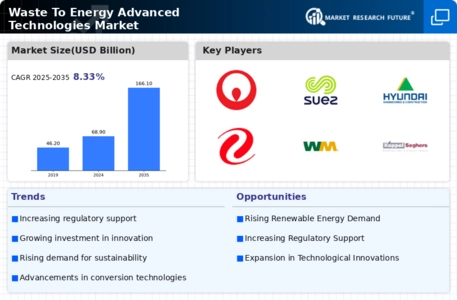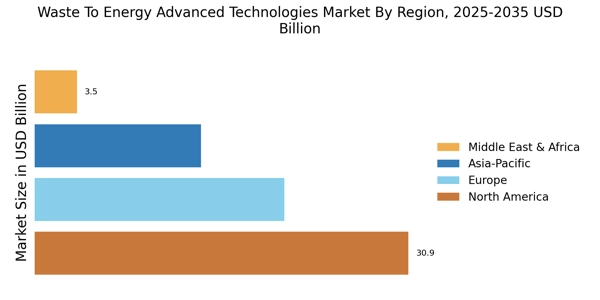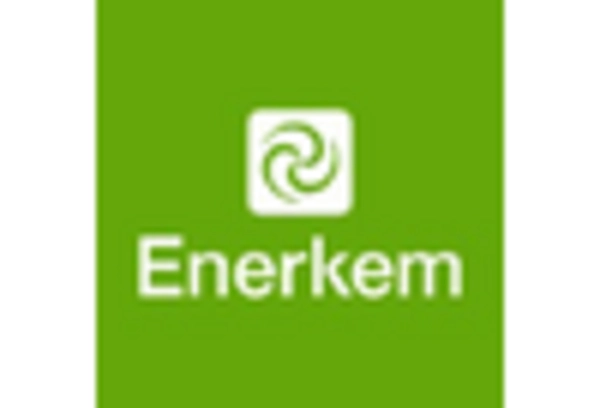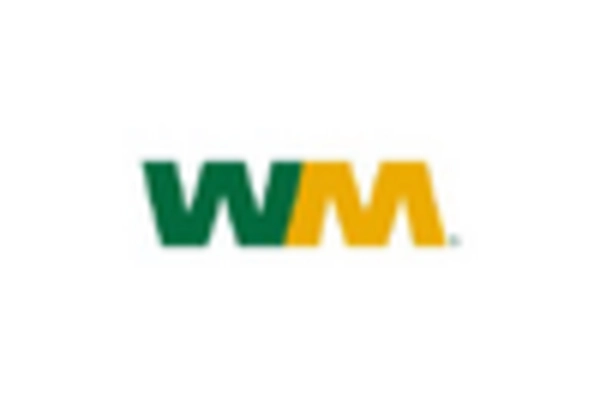Increasing Energy Demand
The escalating demand for energy is a critical driver for the Waste To Energy Advanced Technologies Market. As populations grow and industrial activities expand, the need for sustainable energy sources intensifies. Waste to energy technologies offer a dual solution by addressing waste management challenges while generating energy. Reports indicate that energy consumption is projected to rise by approximately 25% by 2040, creating a pressing need for alternative energy sources. The Waste To Energy Advanced Technologies Market is well-positioned to meet this demand, as it can provide a reliable energy supply while simultaneously reducing landfill waste. This dual benefit is likely to attract both public and private sector investments.
Rising Environmental Concerns
Growing environmental concerns regarding waste disposal and energy production are driving the Waste To Energy Advanced Technologies Market. Public awareness of the detrimental effects of landfills and fossil fuel dependency is prompting a shift towards more sustainable practices. Waste to energy technologies provide a viable alternative by converting waste into clean energy, thus reducing reliance on traditional energy sources. The market is witnessing an increase in initiatives aimed at promoting waste-to-energy solutions as part of broader environmental strategies. This trend is likely to continue, as stakeholders recognize the potential of the Waste To Energy Advanced Technologies Market to contribute to a circular economy and mitigate climate change.
Regulatory Frameworks and Incentives
The Waste To Energy Advanced Technologies Market is significantly influenced by regulatory frameworks and government incentives aimed at promoting sustainable waste management practices. Many countries are implementing stringent regulations to reduce landfill usage and greenhouse gas emissions. For example, policies that mandate recycling and waste diversion are encouraging municipalities to explore waste-to-energy solutions. Additionally, financial incentives such as tax credits and grants for waste-to-energy projects are becoming more common. These supportive measures not only facilitate the adoption of advanced technologies but also enhance the economic viability of projects within the Waste To Energy Advanced Technologies Market. As regulations tighten, the market is likely to expand.
Investment in Renewable Energy Infrastructure
Investment in renewable energy infrastructure is a pivotal driver for the Waste To Energy Advanced Technologies Market. Governments and private entities are increasingly allocating funds to develop renewable energy projects, including waste-to-energy facilities. This trend is supported by the recognition of waste-to-energy as a crucial component of the renewable energy landscape. Reports suggest that investments in renewable energy are expected to exceed several trillion dollars over the next decade. Such financial commitments are likely to enhance the technological capabilities and operational efficiencies of waste-to-energy facilities. Consequently, the Waste To Energy Advanced Technologies Market stands to benefit from this influx of capital, fostering innovation and expansion.
Technological Advancements in Waste Processing
The Waste To Energy Advanced Technologies Market is experiencing a surge in technological advancements that enhance waste processing efficiency. Innovations such as anaerobic digestion, gasification, and pyrolysis are becoming increasingly prevalent. These technologies convert waste into energy while minimizing environmental impact. For instance, gasification can achieve energy conversion efficiencies of up to 90%, which is a notable improvement over traditional incineration methods. Furthermore, the integration of automation and artificial intelligence in waste management systems is streamlining operations, reducing costs, and improving output quality. As these technologies evolve, they are likely to attract investments, thereby propelling the Waste To Energy Advanced Technologies Market forward.


















Leave a Comment